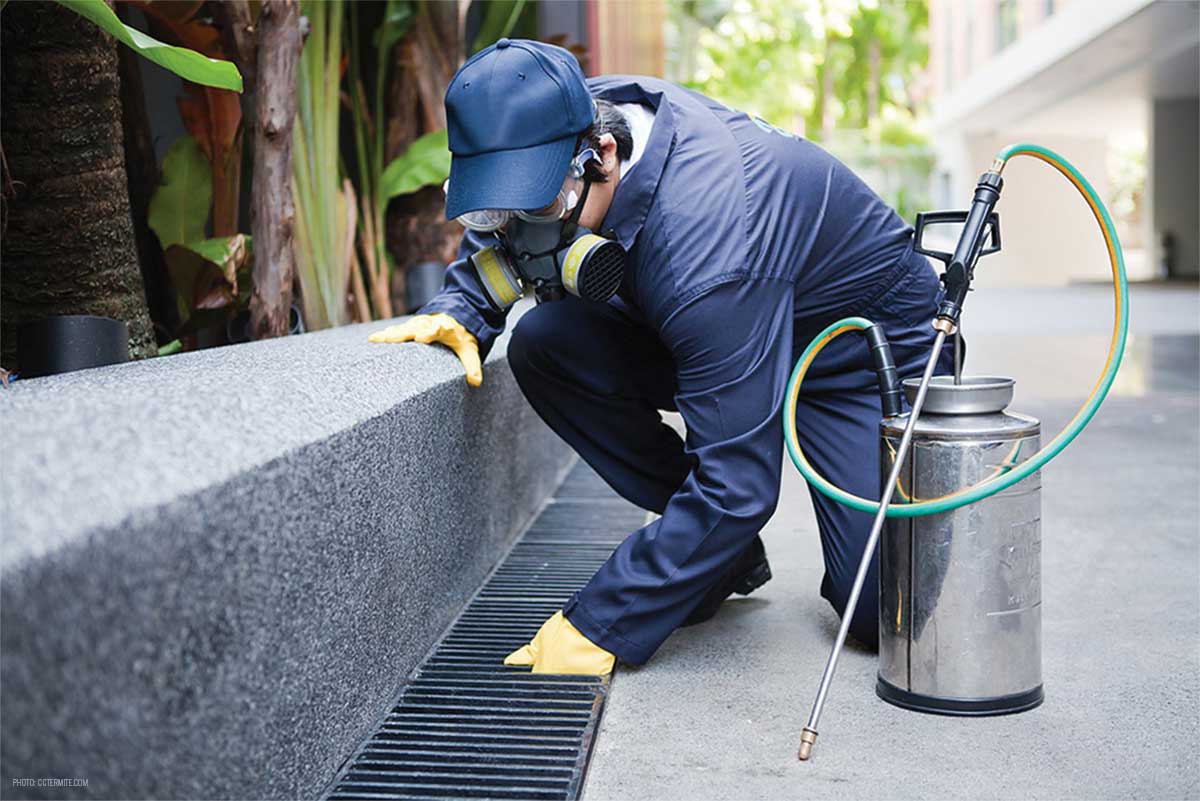Trusted Exterminator Near Me: Your Local Pest Control Service!
Trusted Exterminator Near Me: Your Local Pest Control Service!
Blog Article
Professional Pest Control Techniques for Long-Term Outcomes
Professional parasite control methods encapsulate a comprehensive strategy that starts with an extensive evaluation and analysis, adhered to by specific bug recognition to comprehend their habits patterns. The application of Integrated Parasite Administration (IPM) concepts, combined with eco-conscious therapies, forms the keystone of sustainable bug eradication.
Assessment and Assessment
Upon entering a residential or commercial property for bug control services, the preliminary step is a comprehensive inspection and assessment to identify the degree of the infestation and identify the most reliable therapy plan. Professional bug control specialists are trained to thoroughly check out the properties, searching for indications of insect activity such as droppings, gnaw marks, nests, or any kind of structural damage. They will likewise assess the problems that may be attracting pests, such as food sources, water leaks, or entry factors.

Parasite Identification and Behavior

Moreover, understanding the habits of the determined insect is vital to executing effective control procedures. As an example, knowing where bugs nest, what they feed on, and their activity patterns can help pest control specialists devise strategies to remove them successfully. Some pests might be nighttime, while others are extra energetic during the day. This expertise enables for the application of treatments at optimum times for maximum efficiency.
Integrated Bug Administration (IPM)
Integrated Insect Administration (IPM) methods integrate numerous strategies to regulate and this link prevent insect invasions in a lasting and eco-friendly manner. bed bug treatment. By integrating methods such as biological control, habitat adjustment, adjustment of cultural techniques, and the use of resistant ranges, IPM intends to decrease making use of chemical pesticides
Among the essential principles of IPM is the focus on avoidance. This aggressive method entails monitoring insect populaces regularly to find any prospective issues prior to they escalate. By recognizing insect troubles early, pest control steps can be applied quickly and properly.
Additionally, IPM advertises using non-toxic pest control techniques whenever possible. This can consist of using all-natural killers of the insects, introducing beneficial bugs, or utilizing scents to interfere with breeding patterns. By minimizing reliance on chemical pesticides, IPM not only secures the atmosphere but additionally aids explanation keep an equilibrium in the community.
Environmentally-Friendly Therapies
Executing eco-conscious strategies in parasite control treatments can successfully attend to invasions while prioritizing ecological sustainability. Environmentally-friendly therapies focus on reducing the effect of parasite control methods on environments, non-target microorganisms, and human wellness.
An additional key element of environmentally-friendly treatments is using organic and biodegradable products that break down swiftly without leaving harmful deposits in the atmosphere. Herb pesticides acquired from plants like chrysanthemums or neem supply effective bug control while posing marginal risk to non-target species. Using approaches like warm treatments or scent catches can target details insects with accuracy, minimizing the overall environmental influence of parasite control techniques.
Continuous Monitoring and Maintenance
Normal evaluations by experienced professionals are necessary to determine any kind of signs of bug task, evaluate the efficiency of previous therapies, and make adjustments to the bug control plan as required. By monitoring pest populations over time, bug control experts can track patterns, expect potential problems, and apply you can try these out preventive procedures to minimize the threat of future invasions.
In addition to surveillance, maintenance techniques are important for long-term bug control success. This consists of carrying out proper hygiene procedures to remove prospective food and water sources for bugs, sealing entrance indicate prevent parasites from going into the premises, and resolving any architectural issues that can assist in insect infestations (pest control). By integrating recurring surveillance and upkeep right into an integrated pest management approach, businesses can ensure a pest-free atmosphere and secure their building against pricey damages and wellness dangers
Verdict
To conclude, using expert bug control strategies such as thorough evaluation and assessment, precise bug recognition and understanding of their habits, incorporated insect administration techniques, environmentally-friendly treatments, and recurring monitoring and upkeep are vital for accomplishing long-term cause insect control. By applying these techniques, individuals can efficiently manage parasite invasions and preserve a pest-free environment in a lasting way.
Report this page